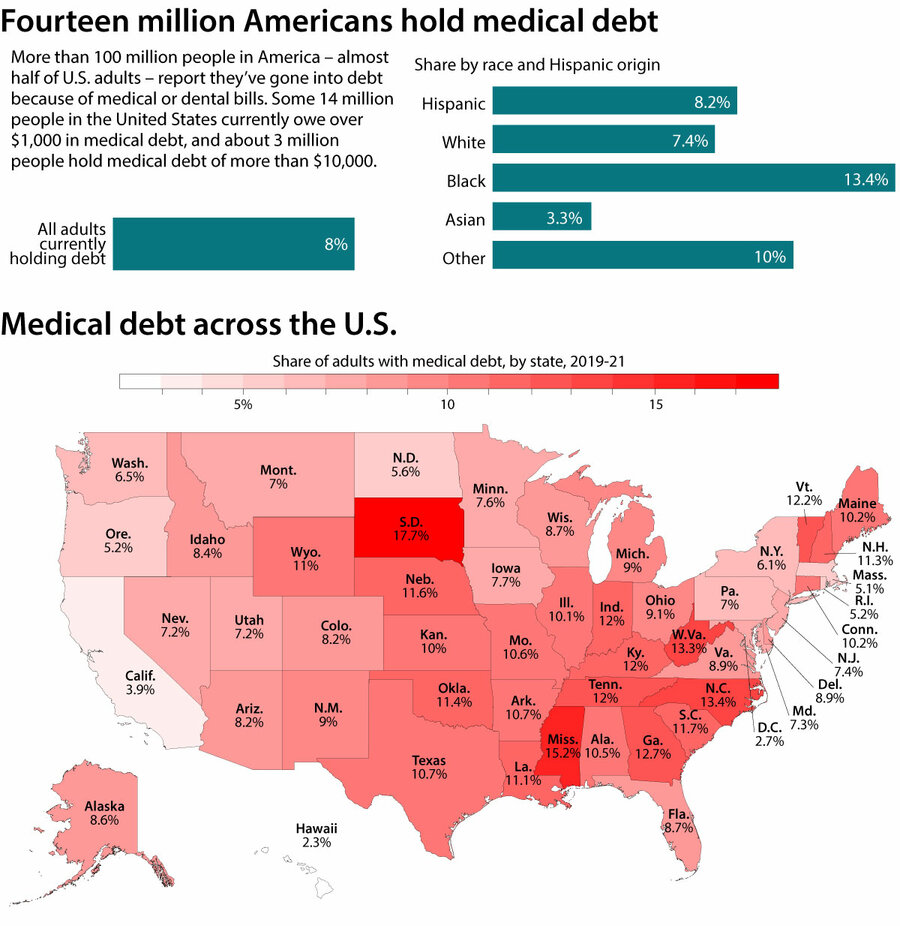• TikTok ban? A federal appeals court panel upholds a law that could lead to a ban on the popular social media platform in the United States over its ties with China-based ByteDance.
• Synagogue burns in Australia: Fire causes extensive damage in Melbourne, in an apparent arson attack that Prime Minister Anthony Albanese condemned as antisemitic. Police say a witness saw two masked people spreading an accelerant in the building.
• Romania election nixed: A top court annuls the first round of the country’s presidential election, days after the president declassified intelligence alleging that Russia ran a sprawling social media campaign to promote a candidate.
• South Korea fallout: The country’s governing party chief expresses support for suspending the constitutional powers of President Yoon Suk Yeol for imposing martial law, making impeachment more likely.
• Comeback for U.S. jobs: The job market rebounded in November, adding 227,000 workers in a solid recovery from October, when the effects of strikes and hurricanes sharply diminished employers’ payrolls.

Why is ���Ǵ��� Science in our name?
Our name is about honesty. The Monitor is owned by The First Church of Christ, Scientist, and we’ve always been transparent about that.
The church publishes the Monitor because it sees good journalism as vital to progress in the world. Since 1908, we’ve aimed “to injure no man, but to bless all mankind,” as our founder, Mary Baker Eddy, put it.
Here, you’ll find award-winning journalism not driven by commercial influences – a news organization that takes seriously its mission to uplift the world by seeking solutions and finding reasons for credible hope.
Explore values journalism About usMonitor Daily Podcast
- Follow us:
 Clayton Collins
Clayton Collins
This fall’s significant, simultaneous wildfires were new to Massachusetts. We usually get our reds and golds in a gentler way.
The Monitor’s Mackenzie Farkus until recently called the commonwealth’s heavily wooded west, where the Butternut Fire burned, home. So she hopped into her hatchback.
“I immediately knew where to go and who might make for good interviews,” Mackenzie says. She drove out to the Berkshires, dodging eight deer and a porcupine, to lead a team report and help us find the broader story in a local event.
Already a subscriber? Log in
Help fund Monitor journalism for $11/ month
Monitor journalism changes lives because we open that too-small box that most people think they live in. We believe news can and should expand a sense of identity and possibility beyond narrow conventional expectations.
Our work isn't possible without your support.
News briefs
Today’s stories
And why we wrote them
( 4 min. read )
Pete Hegseth is the second Trump Cabinet nominee meeting resistance from some Senate Republicans. But these are cases where personal conduct, beyond concerns about policies or experience, has become an issue.
( 5 min. read )
After a fire ravaged the Notre Dame cathedral in 2019, few believed the Parisian icon could be quickly restored to its former glory. But only five years later, it is set to reopen – lighter, brighter, and better protected from disaster than ever.
( 4 min. read )
The shooting of the CEO of UnitedHealthcare has put a spotlight on frustrations over medical debt and lack of security for threatened executives.
( 6 min. read )
Forests make up a high percentage of the U.S. Northeast. After a record drought this fall, and increased wildfires, people in this region are recognizing the need to prepare for threats to forests.
Podcast

Fairness and empathy: 2 politics writers on how they anchor their work
Reporting on America’s political evolution calls for understanding what drives it. Understanding calls for respectful listening and some real introspection. Two veteran Monitor reporters join our podcast to talk about their approaches.
Reading America’s Shift: Part 1
The Monitor's View
( 2 min. read )
One measure of a person’s generosity – beyond, say, paying taxes or serving in the military – is in everyday donations of time or treasure to others. Helping a neighbor. Rescuing a distant relative from ruin. Sending money to strangers in need. Or, after Hurricane Helene flooded western North Carolina, the thousands of volunteers from across the United States fixing up entire communities for weeks.
Perhaps the best metric of these “bonds of affection,” to use Abraham Lincoln’s term, are the results tallied up after each GivingTuesday. This year’s day of generosity in the U.S. – now in its 13th year – provides a broad snapshot of American selflessness.
The event on Dec. 3 saw an increased percentage in donations from last year (16%) that was higher than the increase in consumer spending on Black Friday (10.6%) and Cyber Monday (10.2%). In other words, goodwill beat out goodies, an outcome that befits the deeper, spiritual meaning of the coming Christmas season.
Yet hidden in the data was a 4% increase in volunteering. This was a hopeful sign after years of hand-wringing by nonprofits that Americans, in an age of social isolation and declining trust in institutions, are increasingly avoiding unpaid activities in service to others.
“Generosity isn’t just about money – it’s about connection and community,” said Asha Curran, GivingTuesday’s chief executive officer. “In a world that can feel increasingly divided, we’re seeing people unite through simple acts of kindness that have profound ripple effects.”
The percentage of Americans who participated in GivingTuesday was up 7% from last year. “People are weary after the election,” Ms. Curran told The Chronicle of Philanthropy. A national day of giving was “a moment for a fractured citizenry to feel like they are coming together.”
Giving has so many expressions that it is almost impossible to calculate. A report released in September by The Generosity Commission acknowledges that Americans “are reimagining giving, volunteering, and community before our eyes.” The pandemic lockdown, for example, “gave rise to spontaneously formed mutual aid networks of volunteers helping neighbors and strangers.”
“Most people identify as generous and do not believe there is a right or a wrong way for people to practice generosity,” the three-year research study found. While givers say their resources of time and money may be limited, they “describe generosity as boundless.” Even the latest data from GivingTuesday doesn’t begin to capture it.
A ���Ǵ��� Science Perspective
Each weekday, the Monitor includes one clearly labeled religious article offering spiritual insight on contemporary issues, including the news. The publication – in its various forms – is produced for anyone who cares about the progress of the human endeavor around the world and seeks news reported with compassion, intelligence, and an essentially constructive lens. For many, that caring has religious roots. For many, it does not. The Monitor has always embraced both audiences. The Monitor is owned by a church – The First Church of Christ, Scientist, in Boston – whose founder was concerned with both the state of the world and the quality of available news.
( 3 min. read )
We’re never doomed to be victims of hostility – we’re equipped by God, all-powerful Love, with the inspiration that fosters harmony.
Viewfinder

A look ahead
Thanks for ending your week with us. We’re working on a raft of stories for next week, including another on-the-ground report from Dina Kraft. A tenuous ceasefire between Israel and Hezbollah in southern Lebanon has civilian residents of northern Israel, displaced by more than a year of fighting, wondering about the prospect of returning home to rebuild.








